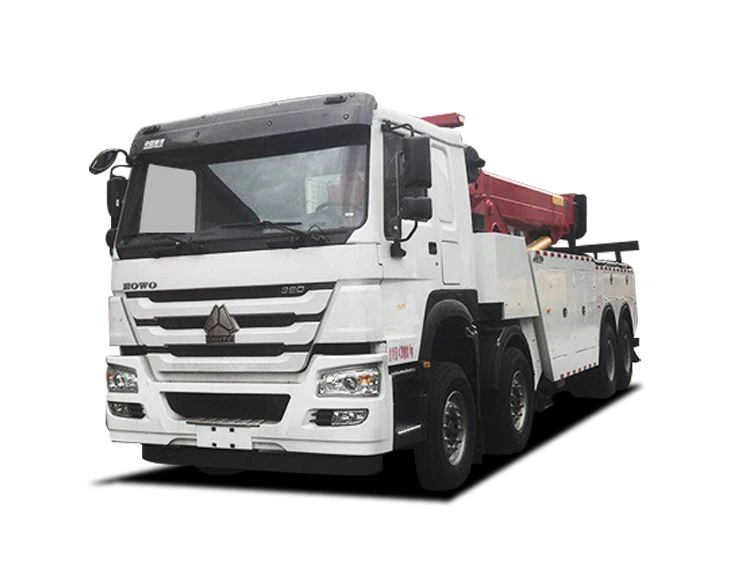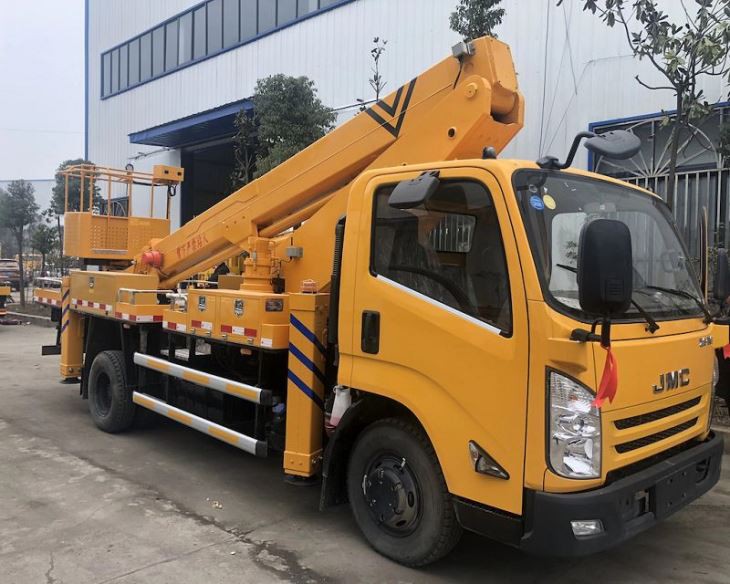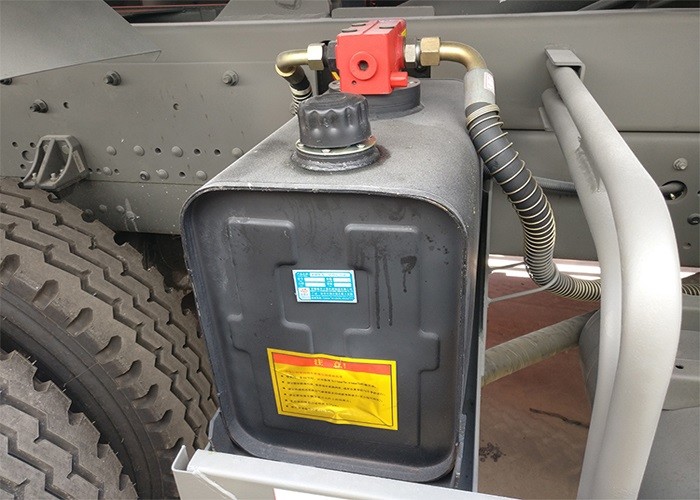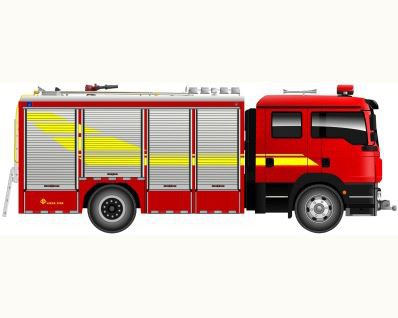Introduction
Cement mixer trucks play a crucial role in construction projects, delivering concrete to sites where it is needed. Understanding what goes inside a cement mixer truck can help operators, construction workers, and anyone interested in the mechanism behind this equipment. This article will provide an in-depth look at the components, working principles, maintenance practices, and more concerning the inside of a cement mixer truck, ensuring that the knowledge shared is both practical and easy to understand.
1. Overview of Cement Mixer Trucks
Cement mixer trucks are specialized vehicles designed to transport concrete from a batched plant to construction sites. These trucks are equipped with a rotating drum that ensures the concrete remains in a fluid state until it reaches its destination.
1.1 History of Cement Mixer Trucks
The evolution of cement mixer trucks dates back to the early 20th century when manual methods were commonly used for mixing concrete on-site. The introduction of motorized trucks revolutionized the industry, paving the way for efficient concrete transportation.
1.2 Importance in Construction
Without cement mixer trucks, the mixing and delivery of concrete would be inefficient, time-consuming, and labor-intensive. These trucks help improve productivity and ensure the uniformity of concrete mixes.
2. Key Components of a Cement Mixer Truck
To fully understand what a cement mixer truck consists of, it’s essential to break down its key components.
2.1 The Mixing Drum
The mixing drum is the most recognizable part of a cement mixer truck. It is designed to rotate, ensuring that the concrete remains thoroughly mixed during transit. The drum can hold anywhere from 6 to 12 cubic meters of concrete.
2.2 Chassis and Frame
The chassis is the structural frame that supports the other components of the mixer truck. It must be sturdy enough to carry the weight of the mixer drum when filled with concrete.
2.3 Engine and Transmission
A powerful engine is critical for operating the mixer truck. The transmission system allows the driver to control the speed and torque necessary for maneuvering the truck even when it is fully loaded.
2.4 Feeding System
The feeding system facilitates the pouring of raw materials—such as cement, aggregates, and water—into the mixing drum. This system ensures the accurate batching of concrete.
2.5 Control System
Modern cement mixer trucks are equipped with advanced control systems that allow drivers to monitor mixing speeds, drum rotation, and concrete consistency.
3. How a Cement Mixer Truck Works
Understanding the operation of a cement mixer truck helps appreciate its efficiency in concrete delivery.
3.1 Loading the Ingredients
The process begins at the batch plant, where various ingredients are loaded into the mixer. Typically, this includes cement, gravel, sand, and water, all measured to create the desired concrete mix.
3.2 Mixing Process
Once the ingredients are loaded, the mixing drum begins to rotate, blending the components. The rotation keeps the mixture homogeneous, preventing the concrete from hardening.
3.3 Transportation
The truck then transports the mixed concrete to the construction site, maintaining rotation throughout the journey to ensure the mixture’s quality.
3.4 Delivery
At the site, the concrete is discharged from the mixer. Many trucks feature chutes or pumps to facilitate easy pouring of the concrete into desired locations.
4. Maintenance of Cement Mixer Trucks
Proper maintenance is vital to extend the life of a cement mixer truck and ensure safe operations.
4.1 Regular Inspections
Regular inspections should be conducted to check for any wear and tear on the drum, chassis, and other critical components.
4.2 Cleaning the Drum
After each use, it’s crucial to clean the drum thoroughly. This prevents concrete buildup, which can cause issues in future operations.
4.3 Oil Changes and Lubrication
Regular oil changes and lubrication of moving parts keep the engine and machinery running efficiently, preventing breakdowns.
5. Safety Considerations
Safety is paramount when operating a cement mixer truck, both for the operator and others on-site.
5.1 Personal Protective Equipment (PPE)
Operators and workers should wear appropriate PPE such as helmets, gloves, and high-visibility clothing to minimize risks.
5.2 Operator Training
Proper training for operators is essential to handle the complex machinery safely. Understanding the truck’s controls and limits can prevent accidents.
5.3 Maintenance of Surrounding Area
Ensuring that the surrounding area is clear of obstructions can help prevent accidents during concrete delivery.
6. Common Troubleshooting Tips
Even with proper maintenance, issues may arise. Here are common problems and how to troubleshoot them.
6.1 Drum Won’t Rotate
- Check power supply and engine function.
- Inspect for blockages in the hydraulic system.
6.2 Poor Concrete Mix
- Ensure correct ratio of ingredients during loading.
- Verify operation of the control system for proper mixing times.
6.3 Leakage
- Inspect hoses and seals for wear.
- Regularly maintain the feeding system to prevent leaks.
7. Innovative Technologies in Cement Mixer Trucks
The construction industry is continuously evolving with advancements in technology. Cement mixer trucks are no exception.
7.1 GPS and Fleet Management
Many modern cement mixer trucks are equipped with GPS technology for real-time tracking of deliveries, optimizing routes, and improving efficiency.
7.2 Automated Mixing and Delivery Systems
Innovative automated systems enable more precise control over the mixing process and enhance the consistency of concrete delivered to sites.
7.3 Eco-Friendly Alternatives
With environmental concerns on the rise, companies are exploring eco-friendly alternatives for concrete production and transportation, such as using recycled materials.
8. Cost Considerations
Understanding the costs associated with cement mixer trucks is essential for managing budgets on construction projects.
8.1 Purchase vs. Lease
| Factor | Purchase | Lease |
|---|---|---|
| Initial Cost | High | Lower |
| Maintenance Responsibility | Owner | Less responsibility |
| Long-term Costs | Potentially lower | Higher if leased long-term |
8.2 Operational Costs
Operational costs include fuel, maintenance, insurance, and salaries for drivers. Efficient operation and regular upkeep can minimize these expenses.
9. Future of Cement Mixer Trucks
The future of cement mixer trucks looks promising as the construction industry embraces innovation.
9.1 Adoption of Electric Trucks
Electric cement mixer trucks are gaining traction, promising reduced emissions and lower operational costs in the long run.
9.2 Smart Technologies
The integration of AI and machine learning can enhance the efficiency and safety of cement mixer operations, leading to better project outcomes.
9.3 Sustainable Practices
Growing focus on sustainable construction practices will likely drive innovations that improve the environmental impact of cement delivery and production.
10. Frequently Asked Questions (FAQs)
10.1 What is the capacity of a standard cement mixer truck?
Most cement mixer trucks can hold between 6 to 12 cubic meters of concrete, depending on the design and size of the truck.
10.2 How is concrete mixed in the truck?
The mixing drum rotates, combining ingredients such as cement, water, sand, and aggregates until they are uniformly blended.
10.3 How often should a cement mixer truck be serviced?
Regular maintenance schedules should be followed, typically every month or after 100 hours of operation, depending on the manufacturer’s guidelines.
10.4 What safety gear should be worn while operating a cement mixer truck?
Operators should wear hard hats, gloves, high-visibility vests, and safety boots to minimize risk during operation.
10.5 What should I do if my truck starts leaking?
Inspect hoses and seals for wear and tear and address any issues immediately. It’s essential to report leaks to a qualified mechanic.
10.6 Are there any eco-friendly options for cement mixer trucks?
Yes, electric cement mixer trucks and systems that utilize recycled materials are emerging as eco-friendly options in the construction industry.



